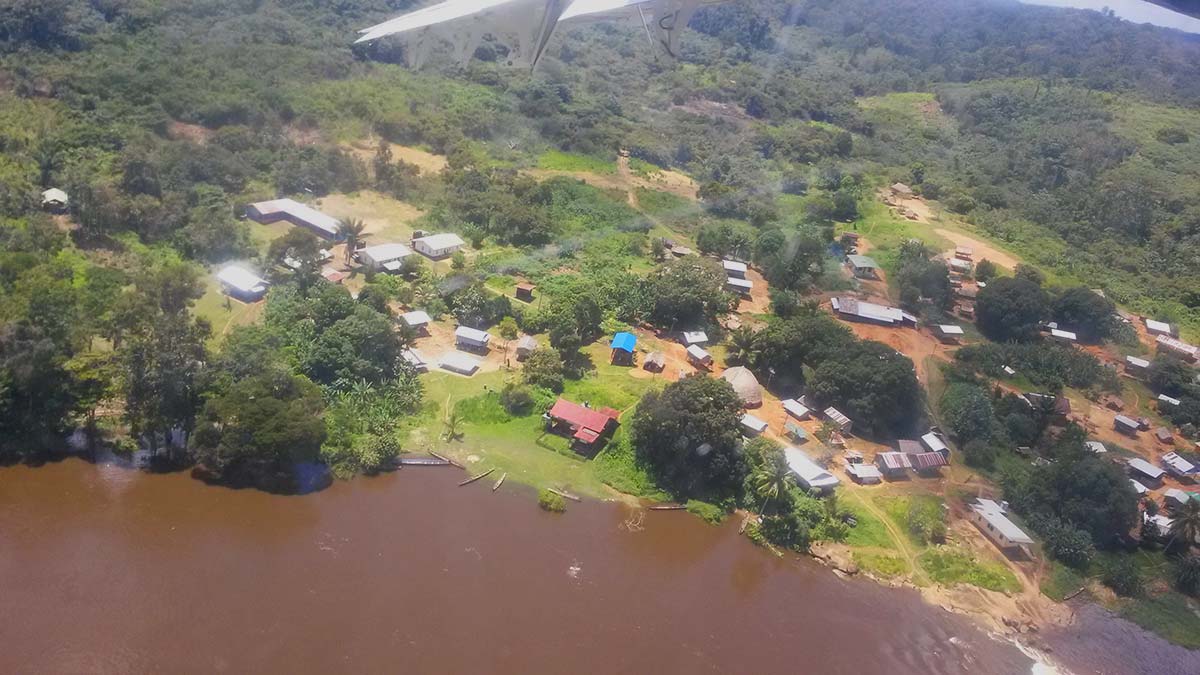Mariënburg, the factory and the village are located in the district of Commewijne, in the north of Suriname.
We all have the right to decent living conditions, with basic services, with quality of life, in a safe environment where we can grow and thrive. Sadly, there are places in the world where this seems like more of an ideal than a reality. In the community of Kampong Sawa, up until recently, the inhabitants constantly struggled with health problems arising from poor sanitation.
Kampong Sawa is located in Mariënburg, an old sugarcane plantation, which, during the Dutch colonization, became the second largest plantation in the world. Nowadays, the plantations are abandoned, and while the village has become a tourist attraction, its people still live in humble conditions.
For the last 30 years, the people of Kampong Sawa have been living in housing conditions with no maintenance and bad infrastructure. To make matters worse, climate change has hit the area hard with horrible floods, putting people's health at great risk.
The problem in Kampong Sawa: Floods and “the Kakos”.
Kampong Sawa literally means "low-zone", and that’s what the place is: a lowland agricultural area which gets heavily flooded when it rains.
Most of the people use the term, “The Kakos,” to refer to the types of outhouses they have for latrines. These are constructed by digging a hole in the ground and building a small wooden structure on top of it.
Can you imagine what happens to these outhouses when it rains heavily? The Kakos can’t withstand it. They get flooded and everything gets mixed up together in one big mess.
“We had water closets outside. When the rain pours, the area floods, and the gutters get clogged from the floodwater going into people’s kitchens. We had to wear boots while cooking.”
Roshni Partoredjo, community member in Kampong Sawa.
Climate change: one of the causes
In the age of climate change, irregular and heavy rainfall in shorter periods have become more frequent, affecting both large and small populations. It is not normal for the weather to have such abrupt devastating changes.
In the case of Kampong Sawa, we have to take critical action, otherwise the area will end up underwater, ruining the health and homes of so many people. Before making any changes to the infrastructure, to confront the effects of climate change in Kampong Sawa, research on key adaptation measures was conducted at the Anton de Kom University of Suriname, Faculty of Technological Sciences, Department Infrastructure. This allowed us to make important improvements to drainage and sanitation systems.
How do we confront the problem?
None of this would be possible without the initiative of the Kampong Sawa community and the University of Suriname, Faculty of Technology, supported by The Japan Caribbean Climate Change Partnership (J-CCCP), in cooperation with the United Nations Development Programme (UNDP) and with the backing of the National Institute for Environment and Development in Suriname (NIMOS). Collectively we have worked hard to combat the impacts of floods with an effective drainage and sanitation system.
The action taken included excavation work to drain the area, and also, providing those accustomed to using the “Kakos”, with septic tanks and decent bathrooms.
Now this place does not flood anymore. In the past, the floodwater would reach the streets, the backyard, even our kitchen, but now, because our gutters and septic tanks have been fixed, things are better; I'm happy with the results.
Mister Daling, community member in Kampong Sawa.
There is still a lot of work to do, but we are happy to have contributed to improving the lives of the people from Kampong Sawa. We look forward to contributing more to Suriname.

 Locations
Locations














